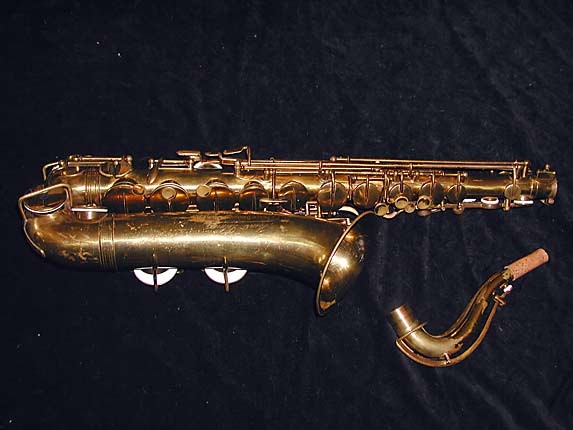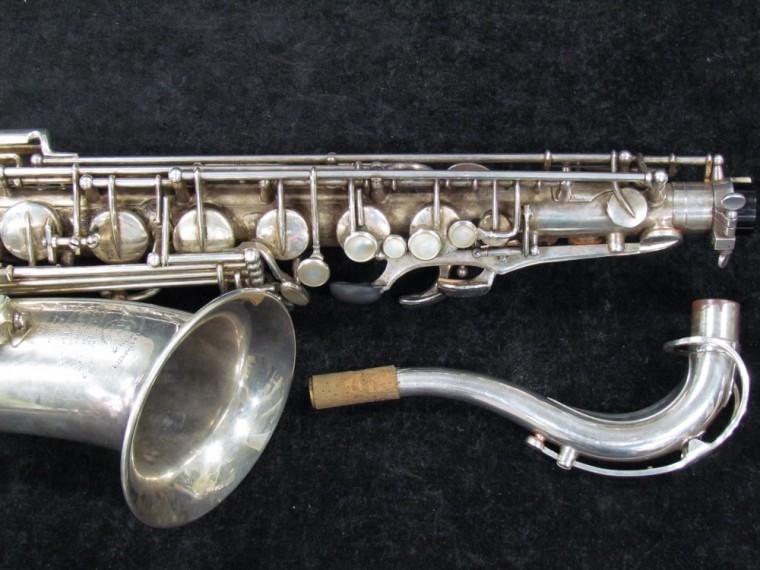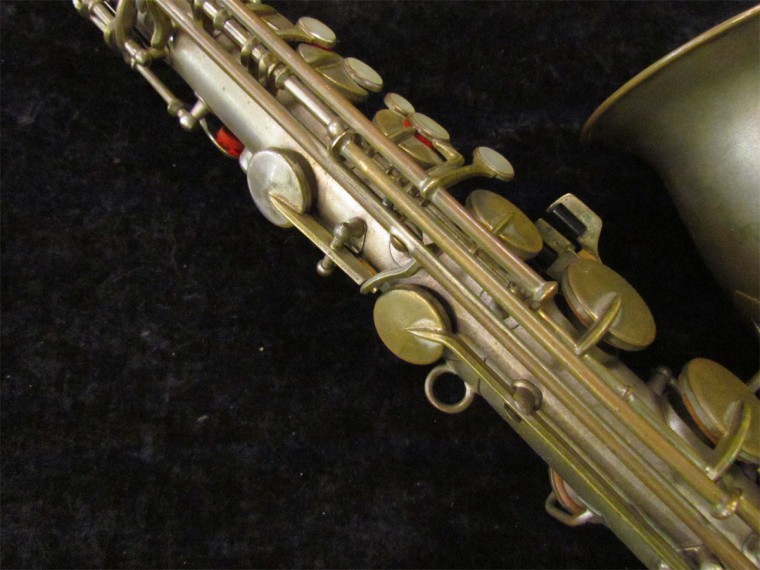Martin C Melody Saxophone Serial Numbers
The C melody saxophone is a saxophone pitched in the key of C, one whole step above the B-flat tenor saxophone. In the UK it is sometimes referred to as a 'C tenor', and in France as a 'tenor en ut'. The C melody was part of the series of saxophones pitched in C and F intended by the instrument's inventor, Adolphe Sax, for orchestral use. Since 1930, only saxophones in the key of B ♭ and E ♭ (originally intended by Sax for use in military bands and wind ensembles) have been produced on a large scale. However, in the early years of the 21st century, small-scale production of new C melody saxophones has commenced in China for a company called Aquilasax. Contents.A C melody saxophone is larger than an alto and smaller than a tenor.
The bore on most models has a diameter and taper more like a 'stretched' alto than a tenor. When seen in profile, its shape bears some resemblance to a tenor saxophone, though it is smaller and the bell appears longer. Most C melody saxophones have curved necks (with a similar shape to that of the tenor saxophone) though C.G.Conn did make straight-necked C melody instruments. C melody saxophones are usually marked with a letter 'C' above or below the serial number. AdvantagesA major selling point for the C melody saxophone was the fact that in contrast to other saxophones, it was not a transposing instrument. As a result, the player could read regular printed music (e.g. For flute, oboe, violin, piano, or voice) without having to transpose or read music parts that have been transposed into B ♭ or E ♭, which most other saxophones would require.
This enabled amateur musicians to play along with a friend or family member by reading from the same sheet of music—so long as the music fell within the pitch range of the C melody saxophone itself, that is, was not too high or low. Another selling point was that the C melody produces a more muted tone than the E ♭ alto or B ♭ tenor, which was useful when playing at home. Many novelty tunes, most influenced by 1920s dance music, were written specifically for the instrument. They were sometimes also used in churches to accompany hymns. MouthpiecesDedicated mouthpieces were produced for the C melody saxophone, though these may be hard to find in the 21st century.
The C melody has a muted sound when compared to other saxophone types, particularly if an original vintage mouthpiece is used. This made it particularly useful for its originally intended environment of playing in drawing rooms. C melody mouthpieces often give a C melody saxophone a slightly muffled sound, which may or may not be what the player desires. Some players successfully use a tenor saxophone mouthpiece (e.g.
Rico Graftonite or Metalite on a Conn straight-necked C-melody, modified by cutting off one centimeter of the mouthpiece shank, so it is not obstructed by the microtuner) with their C melody saxophone, though depending on which mouthpiece type is chosen (e.g. Long shank or short shank) there may be problems regarding the accuracy of intonation, particularly at the upper end of the range. As a result, some experimentation may be required in order to find a tenor mouthpiece which provides accurate intonation across the entire scale. Other players have successfully fitted alto saxophone mouthpieces to their C melody saxophones.
As before, some experimentation may be required. With a more modern mouthpiece fitted, a C melody saxophone can lose some of its muted qualities and sound brighter, with more of the sonic power that an alto or tenor saxophone gives.
Currently, there are a number of manufacturers producing C melody mouthpieces e.g. Beechler, Ralph Morgan, Runyon, Aquilasax and others. Production historyA number of high-quality manufacturers produced C melody saxophones (including Buescher, C.G.Conn, Martin, King and Selmer) from 1914 through 1930. Most of these companies also manufactured 'stencil' saxophones for other vendors under different names e.g. The 'Wurlitzer American', 'Harwood Jenkins' or 'Lyon & Healy' - which were actually made by Buescher.
Production of C melody saxophones appears to have reached a peak around 1923, with a gradual reduction thereafter. Comparatively few C melody saxophones were made in the late 1920s. The Conn straight-neck Tenor in C is the most common of the actual orchestral saxophones and has a more classical sound and plays in tune throughout the instrument's range. This is one of the few models actually made for professional use.
However, the long straight neck means that the saxophone must be held away from the player's body, a posture which some people may find uncomfortable.Cheaper, novelty C melody saxophones were marketed from the late 1910s through the early 1930s as a version of the saxophone intended for amateur use, in homes, schools, and town bands. It was made with a bore considerably narrower than that of the B ♭ tenor saxophone, being more or less a 'stretched' version of the alto saxophone bore.By the late 1920s the popularity of C melody saxophones had faded. Sales of all saxophones fell dramatically after the Wall Street Crash of 1929, and the C melody was one of several models (including the mezzo-soprano saxophone) which were dropped from production soon after. However, it is important to note that production ended for purely financial reasons, and not because of any inherent flaw in the design or poor manufacturing standards.
C melody saxophones were as good as the reputation of whichever company manufactured them. The basic problem was that the Great Depression which followed immediately after the stock market crash of 1929 caused extremely harsh economic conditions throughout the world, which affected the production of all leisure-related consumer products. This unusually profound recession hit saxophone manufacturers hard, forcing them to reduce the range of musical instruments they produced down to the most popular models, simply in order for those companies to survive.
Volkswagen headline font free. A stressed Swiss headline font designed to emulate old posters and newspapers. This revised version includes several additions to the sparse original character set, along with metrics and kerning improvements, to improve the font's usefulness beyond its original design function. Download VW Headline Book font for PC/Mac for free, take a test-drive and see the entire character set. Moreover, you can embed it to your website with @font-face support. The best website for free high-quality Vw Headline Book fonts, with 28 free Vw Headline Book fonts for immediate download, and 59 professional Vw Headline Book fonts for the best price on the Web. The best website for free high-quality Volkswagen Headline fonts, with 28 free Volkswagen Headline fonts for immediate download, and 17 professional Volkswagen Headline fonts for the best price on the Web. The best website for free high-quality Vw Headline fonts, with 33 free Vw Headline fonts for immediate download, and 69 professional Vw Headline fonts for the best price on the Web. Freefonts Free Fonts search and download. Download Volkswagen-Bold Font - Free Font Download.

As a result, production of C melody saxophones ended abruptly. By the time the world economy had recovered sufficiently for C melody saxophones to be economically viable again (around 1935) people's leisure time interests had changed and there was no longer a market for them. Additionally, the 'Big Band' era had started in the early 1930s and anyone who wanted to learn the saxophone was interested primarily in soprano, alto, tenor or baritone because this would, potentially at least, allow them to play in a Big Band, and Big Bands did not feature C melody saxophones in their instrument line-up. As a result, there was no consumer demand for C melody instruments, so would-be manufacturers had no incentive to resume production. Not surprisingly, instrument manufacturers concentrated instead on making other types which had strong customer demand and were easy to sell e.g.
Alto and tenor saxophones.C.G.Conn made a small number of C melody saxophones during the 1930s which were stamped with the model number '8M'. These were almost certainly completed saxophone bodies that had been kept in storage since the 1920s and which were furnished with updated keywork after the Great Depression ended. At least one Conn C melody dating from 1938 has 'Transitional' keywork (similar to that found on a Conn 6M alto or Conn 10M tenor) plus a 'Lady Face' engraving on the bell front. However, late model Conn C melody saxophones like these are extremely unusual because they are rare exceptions to the general rule that production of C melody saxophones ended in 1930.During the 1960s, the French woodwind manufacturer Leblanc produced a few C melody saxophones (brand stamped on bell was Vito), though it is thought that they manufactured fewer than 20 examples.The C melody was the saxophone most commonly associated with famed performer Rudy Wiedoeft. Additionally, some early jazz players got their start on the C melody, including Benny Carter and Coleman Hawkins, though Carter eventually moved to the alto, and Hawkins to the B ♭ tenor. The most famous C melody player was Rudy Weidoeft.
Although he played alto and soprano saxophones as well (the latter in ensembles with Arnold Brilhart, Alford Evans, and others), he made his most famous recordings on the C melody, and was a significant factor in the saxophone craze that resulted in so many C melody instruments being sold in the 1920s. Another famous C melody player was Frankie Trumbauer, a jazz player who was known for his superb technical ability on the instrument.
Jack Pettis, a member of the Ben Bernie orchestra and a recording artist under his own name, was another skilled player of the instrument.A few modern-day saxophonists occasionally perform on C melody instruments, including Anthony Braxton, Kyle Vincent, Scott Robinson, Rick Arbuckle, Rosy McHargue, Dan Levinson, Hayes Greenfield and Joe Lovano. Carla Bley has also used the instrument.Despite the fact that they have not been manufactured in over 75 years, C melody saxophones are readily available today, due to their limited use and the sheer number that were produced in the early 20th century.
They can be found at stores that carry used instruments, tag sales, rummage sales and pawn shops across the United States. Related and new instruments. Another saxophone pitched in C, called the contralto saxophone, has been produced by California instrument maker Jim Schmidt since the late 1990s. It is a modern design and differs from the vintage C melody instruments in several ways, most notably its linear chromatic fingering system.

Starting 2007, the New Zealand company Aquilasax began production of a new 'C melody tenor saxophone'. However, Aquilasax ceased operating June 2015, stating '.our saxes are more popular with customers than with the factory that makes them. We have been unable to solve this problem and have not been able to make the business profitable as a result.' .

Selmer Reference 54 Serial Numbers
Modern C melody saxes are available (as of 2014) under the Sax.co.uk house label 'Sakkusu', as well as on eBay from assorted Chinese manufacturers.References.
Comments are closed.